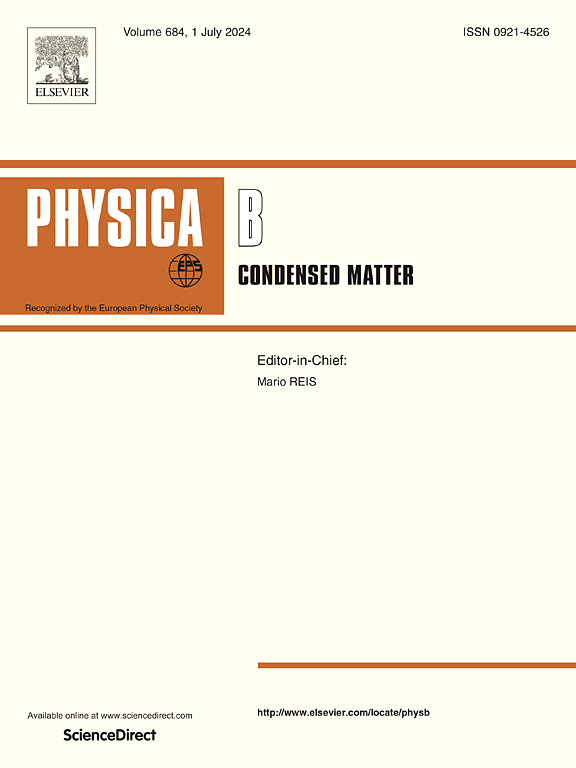Effect of 8 MeV electron irradiation on indium doped Cu2SnS3 crystals
IF 2.8
3区 物理与天体物理
Q2 PHYSICS, CONDENSED MATTER
引用次数: 0
Abstract
In this work, the effect of irradiation with electrons with an energy of 8 MeV on the surface topology, distribution of surface potentials, electronic structure, and Raman spectra of Cu2SnS3 samples doped with 4 % indium (CTS:In) were investigated. The CTS:In samples contain two crystal phases: tetragonal t-CTS and cubic c-CTS. The cubic c-CTS phase was deformed by electron irradiation. The grain structure modification on the surface of CTS:In under the influence of electrons and the disappearance of high positive potentials detected at the grain boundaries before irradiation were discovered. The peak associated with the InSn defects is shifted from +49 mV to +44 mV. This is related to the tearing out of indium atoms from site states of tin onto the surface of the CTS:In samples. This is confirmed by the study of the electronic structure of the CTS:In samples before and after irradiation.
求助全文
约1分钟内获得全文
求助全文
来源期刊

Physica B-condensed Matter
物理-物理:凝聚态物理
CiteScore
4.90
自引率
7.10%
发文量
703
审稿时长
44 days
期刊介绍:
Physica B: Condensed Matter comprises all condensed matter and material physics that involve theoretical, computational and experimental work.
Papers should contain further developments and a proper discussion on the physics of experimental or theoretical results in one of the following areas:
-Magnetism
-Materials physics
-Nanostructures and nanomaterials
-Optics and optical materials
-Quantum materials
-Semiconductors
-Strongly correlated systems
-Superconductivity
-Surfaces and interfaces
 求助内容:
求助内容: 应助结果提醒方式:
应助结果提醒方式:


